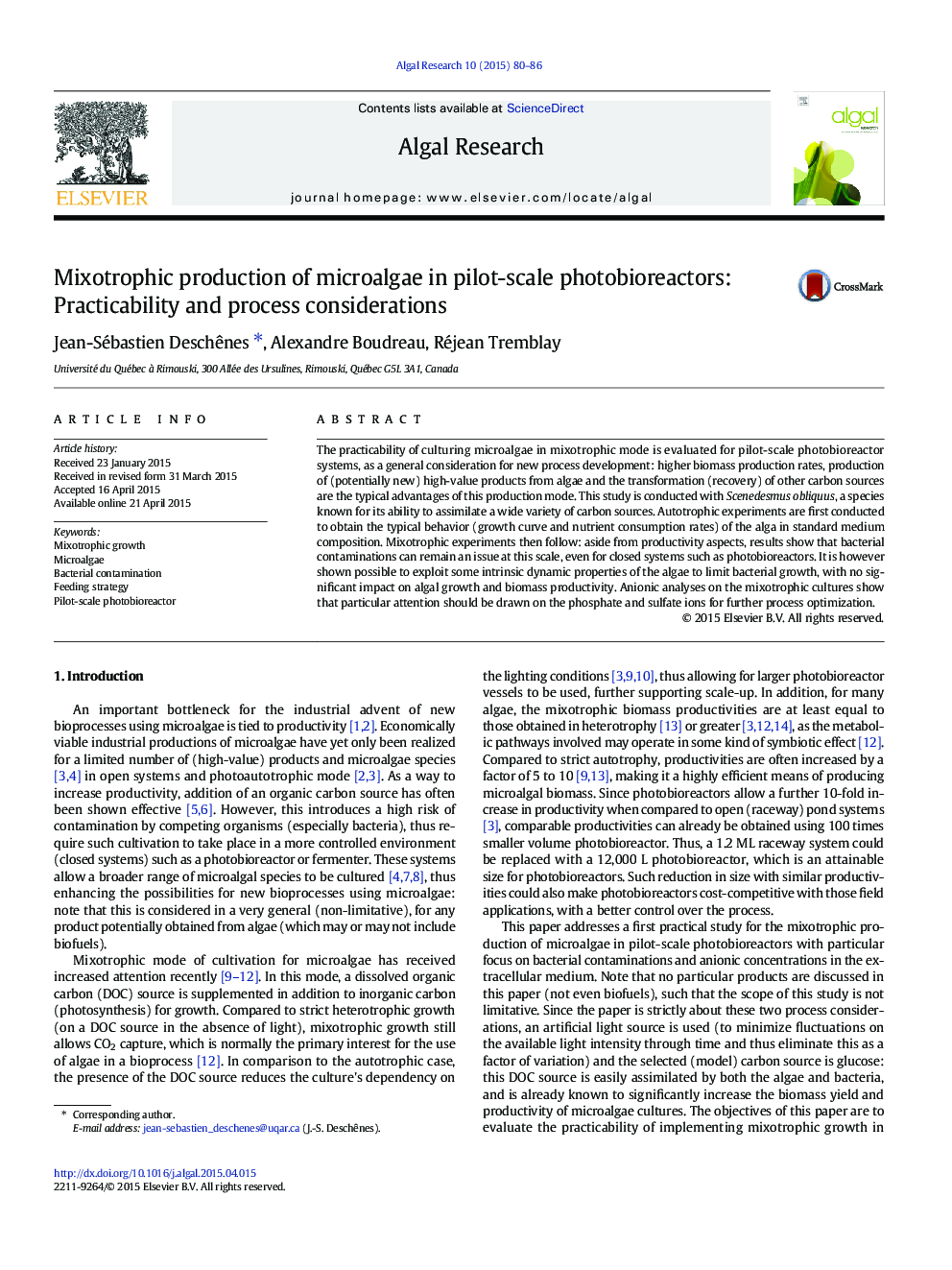| Article ID | Journal | Published Year | Pages | File Type |
|---|---|---|---|---|
| 1742019 | Algal Research | 2015 | 7 Pages |
•Pilot-scale photobioreactors remain prone to contaminations in mixotrophic mode.•Means other than sterilization are necessary for controlling the bacterial load.•Dynamic properties of the algae can be actively exploited to help them compete.•Bacterial growth can be hampered through modulations in the feeding strategy.•Nutrient consumption rates require additional attention in mixotrophic cultures.
The practicability of culturing microalgae in mixotrophic mode is evaluated for pilot-scale photobioreactor systems, as a general consideration for new process development: higher biomass production rates, production of (potentially new) high-value products from algae and the transformation (recovery) of other carbon sources are the typical advantages of this production mode. This study is conducted with Scenedesmus obliquus, a species known for its ability to assimilate a wide variety of carbon sources. Autotrophic experiments are first conducted to obtain the typical behavior (growth curve and nutrient consumption rates) of the alga in standard medium composition. Mixotrophic experiments then follow: aside from productivity aspects, results show that bacterial contaminations can remain an issue at this scale, even for closed systems such as photobioreactors. It is however shown possible to exploit some intrinsic dynamic properties of the algae to limit bacterial growth, with no significant impact on algal growth and biomass productivity. Anionic analyses on the mixotrophic cultures show that particular attention should be drawn on the phosphate and sulfate ions for further process optimization.
